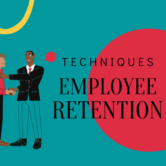The 3 Types of Workplace Flexibility Employees Are Looking For

“Work-life balance” is a term that’s used more often in the current landscape. We are now in a post-pandemic era, a time when most employees have experienced the pros and cons of working remotely from home – and going by consensus, the pros of remote work have won over many employers. This resulted in a “hybrid” work setup now widely prevalent in the corporate world and other industries where work-from-home is applicable.
This article discusses the flexibility that workers today expect from their employers, especially from industries that are now tried and tested to be compatible with remote and hybrid work arrangements.
What Is Workplace Flexibility?
Workplace flexibility is an umbrella term used to describe work arrangements where employees enjoy some freedom to decide when, where, and how they will deliver their work. It’s not a new or revolutionary concept. In fact, “telecommuting” and “telework,” terms used synonymously with work flexibility, were coined by Jack Niles in 1972 to describe his work arrangement at NASA, where he performed his tasks from various locations via telecommunications equipment.
Today, work flexibility often refers to three essential areas.
3 Types of Work Flexibility
In modern employment discussions, flexibility often refers to three things:
- Flexible Location
In light of digital advancements and the availability of the Internet, remote work flexibility has become a compelling alternative to a traditional office setup. Many employees and job seekers today seek the freedom to work from home to combat the arduous challenges of a daily commute.
Hours spent in transit to and from the workplace not only drain energy but also eat into personal time. Whether driving or riding public transport, commuting is a tremendous source of daily stress for working adults. With remote work, employees can start working on time or earlier when their physical and mental energy is at its peak.
By allowing remote work and giving the freedom to work from home or other alternative locations, employers can demonstrate their commitment to supporting work-life balance and helping their employees achieve this. It empowers individuals to manage their personal and professional lives better and achieve balance in the way that works best for them.
- Flexible Hours
The second area that workers expect to have some freedom with when talking about flexible working conditions is the hours. Having a rigid daily schedule is becoming less appealing as more households are choosing to integrate work and school into their everyday home lives (again, as a result of the societal changes that stemmed from the global pandemic). Employers will find that many parents want more time in the morning to get their kids ready for school, for example. Some may even need the entire morning off to supervise homeschooling.
A traditional work setting imposes rigid time structures that can clash with an individual’s non-work commitments. After enjoying flexible work hours during the pandemic, and if the rest of their family members and friends currently work on flexible hours, the prospect of reporting for work on a fixed schedule can cause friction in personal relationships, heighten stress, and make work-life balance difficult. Employees today seek flexibility in their work hours to adapt their schedules to their unique lifestyles and personal obligations.
- Compressed Workweek
A five-day workweek is the convention and is widely practiced until now. With flexible work hours becoming more acceptable, it appears that a compressed workweek of four days is also becoming popular. Companies in Belgium, Portugal, Germany, the UK, and other European countries are already testing out shorter work weeks, and they are seeing many positive results.
Many employees grapple with fatigue and burnout due to extended workdays. Not only do they have to work five or six days a week, but sometimes they also extend by 30 minutes to an hour to finish their daily work.
The compressed workweek model offers a progressive solution. By giving employees the option to condense their total weekly work hours into fewer days, they are empowered to work more efficiently and finish work (and keep their output at a high quality) earlier instead of later. This flexibility also allows employees to enjoy more consecutive days off, giving them a bigger chunk of time for interests outside of work. Because they have a longer gap between workdays, employees can recharge better and return to work with a more positive attitude.
The Benefits of Work Flexibility
We’ve already touched on several benefits of allowing flexibility in location, working hours, and workdays, but here are more reasons to adopt these modern arrangements in the workplace:
- High morale and employee satisfaction
- High productivity
- Improved workplace culture and better employee engagement
- Improved physical and mental health
- Increased employee retention and low turnover rates
- Fewer PTO requests
- Lower risk of illness in the workplace
- Improved production efficiency and faster turnarounds
- Stronger talent acquisition
- More applications and acceptances from top talents
The Growth of Workforce Flexibility
It’s remarkable how, only three years ago, such flexibility was so rare most people would only associate remote work with travel photographers, consultants, marketers, and content creators who chase work from one physical location to another. This is because workforce flexibility goes against the norms of corporate culture wherein supervisors demand constant visibility over their subordinates eight hours a day, seven days a week. However, the pandemic years taught us the importance of work-life balance and that work flexibility is essential for achieving that.
Employers today must understand that workers are now choosing workplace flexibility over salary. According to data from McKinsey’s American Opportunity Survey in 2022, 87% of employees will take the chance to enjoy flexible work arrangements.
Of course, not all jobs are suitable for remote work. Some prefer working on-site because they work better in an office setting, don’t have the proper equipment at home, or simply because the nature of their job requires them to be at the workplace (i.e., production or manufacturing technician). But for positions that can be performed from anywhere in the world, such as tech and IT, journalism, marketing, virtual assistance, professional services, etc., employers can expect top candidates to want at least some flexibility.
Are You Flexible Enough for Your Employees?
As a business owner or employer, it will be beneficial in the long run to explore workforce flexibility and apply it whenever possible in your company. But if you are trying to figure out how to enforce remote work while ensuring no one compromises on efficiency and quality, leadership and workforce management experts can help.
HPWP Group helps companies discover their strengths and develop strategies to maximize human resources without sacrificing work-life balance. We offer coaching, training, and consulting services to help business organizations reach their highest potential.
Discover how much autonomy you can afford to give your employees, given the nature of your business and the work you need to deliver to your customers. Contact HPWP Group today.










